Garver’s state-of-the-art membrane process enhanced water treatment, minimized DBP formation, and provided safer, cleaner water to the community
A new water-softening treatment plant in Tuscumbia, Ala. is the state's first water utility to use a blended series membrane process.
The state-of-the-art filtration technology is the centerpiece of a new 4 million gallons-per-day (MGD) water treatment plant. The system is purifying and softening the city's water, which is high in alkalinity, aka "hard water." The blended series membrane process, consisting of ultrafiltration followed by nanofiltration, meets all filtration requirements of the Safe Drinking Water Act and reduces the raw water's hardness (220 milligrams per liter) down to the target of 100 mg/L.
"This community invested in the best available technology for its customer base, and this new plant is the only one of its kind in Alabama," said Garver Project Manager Kevin Mullins, PE, PLS. "This process is a unique and cost-effective solution to correcting a hard-water condition in the source water."
Teaming with the city, Garver provided project design, funding assistance, bond issue assistance, construction management and operational support.
"Our existing plant was built over 60 years ago and has long outlived its usefulness," said Tuscumbia Utilities General Manager David Thornton. "The new plant will provide safe, high-quality, reduced-alkalinity water for the next 50 years for our town."
Clogged Plumbing and Appliances
The city's raw water supply comes from Big Spring, a 50-MGD spring in historic Tuscumbia. Big Spring has provided the city with water since the town was incorporated in 1820. The city's hard water is attributed to the lime, calcium and magnesium found in rock layers around the underground flow.
Hard water has a high mineral content, such as calcium carbonate, and can lead to lime-scale buildup. This can cause problems in appliances, such as leaving a white flaky deposit on surfaces and making them work harder to operate.
"Residents complain—and rightly so—about clogged-up water heaters and coffee pots, discoloration of silverware and plastics in dishwashers, etcetera, due to the high alkalinity of the water," Thornton said. "The use of the series membrane filtration process results in a hardness of approximately 110 mg/L without sacrificing the taste of the water. The hardness reduction is going to be very popular with our residents."
You Shall Not Pass! (through the membrane)
Membranes are man-made filter material with miniscule pore sizes designed to capture and block target pollutants and minerals in water. Garver designed Tuscumbia's blended series membrane process with full-stream ultrafiltration (a low-pressure membrane process) followed by split-stream nanofiltration (a high-pressure membrane process). Using pressure to force water through the tight membrane sieve provides a higher degree of filtration and enhances treated water quality. It also minimizes disinfection by-product formation through total organic carbon reduction and provides superior pathogen removal.
The membrane system required piloting for design confirmation and regulatory approval. Garver developed a detailed plan to pilot the process train. After operating 30 days at the originally proposed flux rate, ultrafiltration flux was incrementally increased and permeability was monitored. Increasing the flow rate by 30 percent proved successful, thereby reducing the number of required membranes and decreasing the system's footprint and capital cost.
"This project provides the community safe and reliable drinking water that exceeds the EPA's [Environmental Protection Agency] future disinfection by-product requirements," Mullins said.
The treatment plant is outfitted with raw-water pumping, pretreatment basins, membranes, disinfection, high-service pumping and a new 500,000-gallon clearwell. B.H. Craig Construction Company of Florence, Ala. submitted the low bid of $13.36 million.
"Garver provided initial value engineering and worked with the contractor to minimize change orders on the project," said Garver water engineer Kyle Kruger, PE. "This helped the project finish under budget."
More Capacity
Tuscumbia's 60-year-old water treatment plant can produce 2.2 MGD. However, this is not always enough to serve Tuscumbia Utilities' 4,850 customers, which has led to doubling the treatment size.
"During periods of drought or low rainfall, we had to buy water from our neighboring sister cities," Thornton said. "Along with purchasing an extra 500,000 gallons per day, we also issued water conservation notices."
Although Tuscumbia's population is under 9,000, its growth has been steady, and a surge of new residents may be coming. Thornton said Navistar Corp. has announced it will operate a truck manufacturing and assembly plant 15 miles away, which could employ as many as 1,800 workers.
"Our plant capacity was too small for the economic growth we've experienced over the past decade," Thornton said. "Our customer base had grown around 10 percent over the past several years."
Now operational, the new treatment plant can produce 4 MGD with the potential to handle more in the future. "The plant can also easily be expanded to increase capacity another 150 percent if needed, up to 6 MGD," Mullins said.
Blending with Spring Park
The Tuscumbia water treatment plant is located within a residential neighborhood next to Spring Park—a popular area enhanced with a large lake, a waterfall, fountains and a laser light show. It was important that the treatment facility's aesthetics blend in with the surroundings.
"We suggested that the building look more like a large house than a water plant," said Thornton.
Garver used building information modeling (BIM) to provide rapid prototyping and realistic 3-D renderings to enhance design and aid in public communication and awareness. "BIM is a 3-D modeling paradigm where digital representations of a facility have intelligence and contain information," said Stacey Conrad, Garver's lead CADD technician on the project. "We used a 3-D modeling software to help our clients and the public visualize the filter building in its environment, which generated project excitement and prompted conversations about the architectural aesthetics."
Garver created 3-D renderings that revealed how the facility's exterior and interior might look with particular windows and brick work. The model could also be viewed from different angles and elevations. In particular, this helped answer questions regarding how patrons would view the plant from a downhill walking path. Garver generated a rendering that showed how the site would be concealed from the trail's vantage point.
"Garver's engineers and Mangold Burris' architects designed a very attractive brick building with arched windows that exactly fits the residential area where it is located," Thornton said.
Using BIM proved beneficial in visualizing a structure that architecturally fits within the confined site overlooking the park.
"It looks like the plant has always been there—and that it was always meant to be there," said Mullins.
A Key Design Component
Due to intricacies in the treatment plant's membrane systems and ancillary equipment, as well as the need for tight coordination between design disciplines, Garver also leveraged BIM to design the membrane and administration facility.
"We had architectural, structural, civil, process, electrical, plumbing and mechanical components all in one 3-D model," said Conrad. "This allowed us to run collision detection for conflicts and address cross-discipline issues early in the design process."
The 3-D model also provided several design disciplines with accurate information to determine material quantities and process cost estimation. Garver included the 3-D graphics in the drawing package, which was a key component in conveying design intent to the contractor.
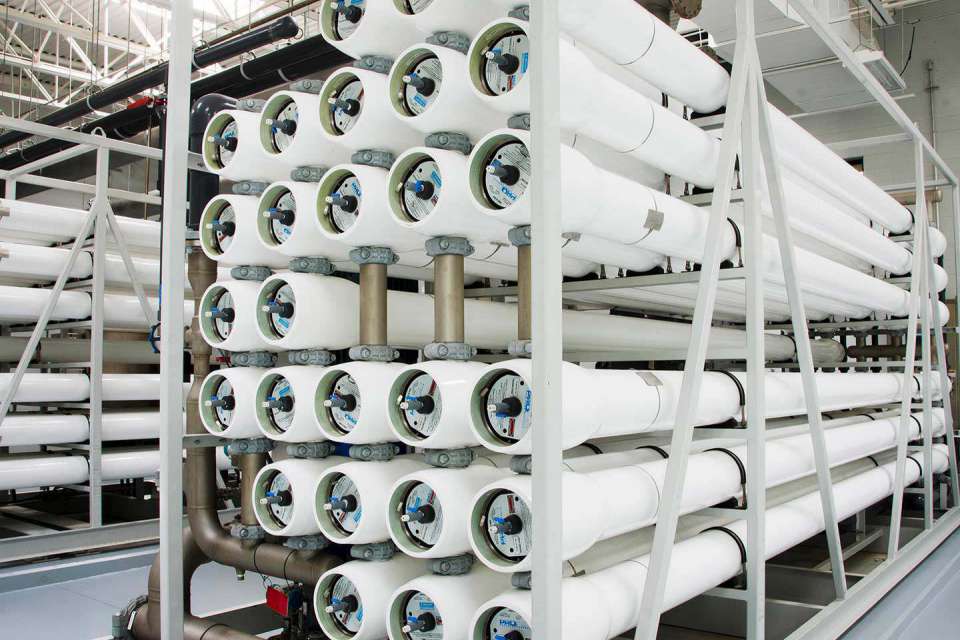
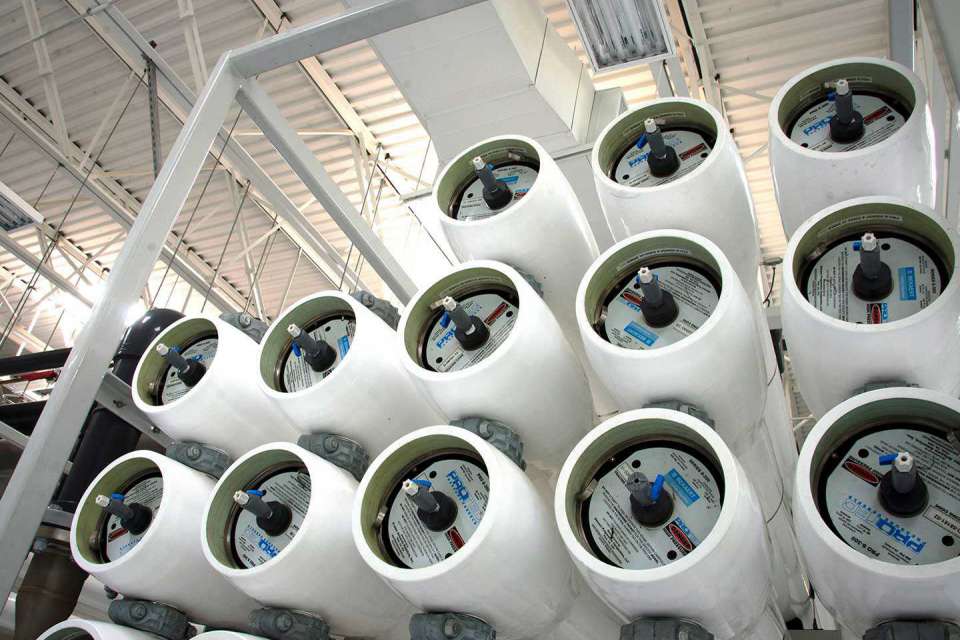
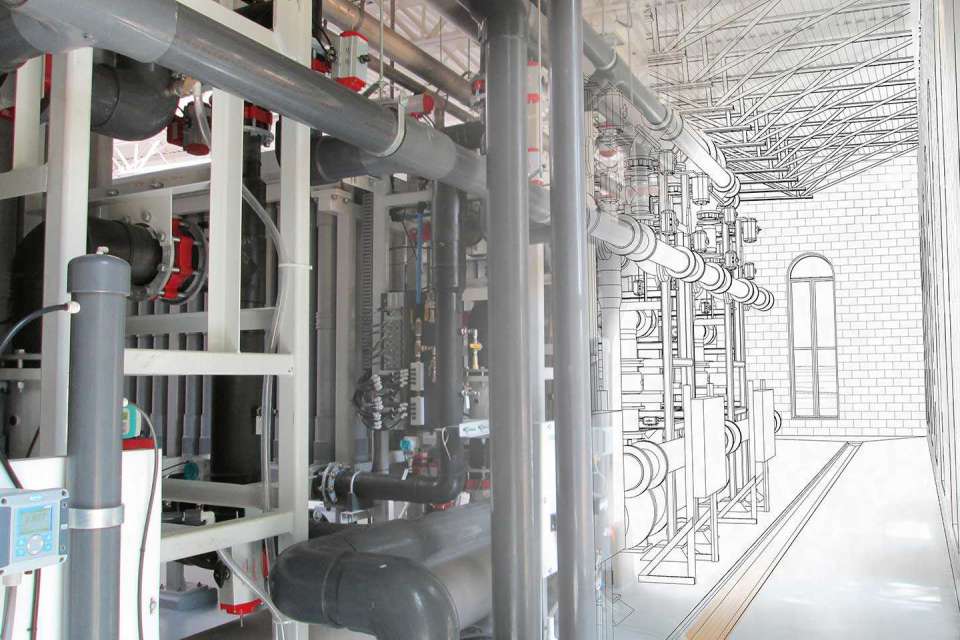


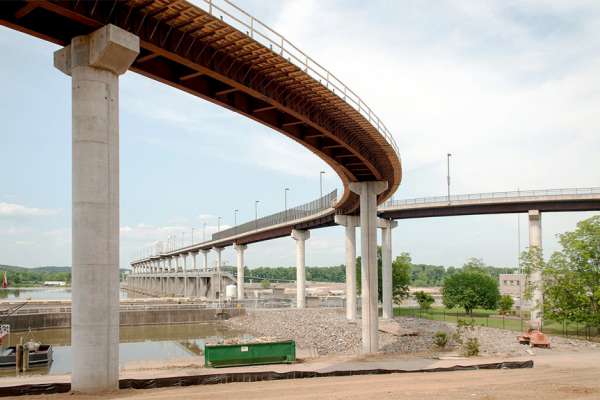


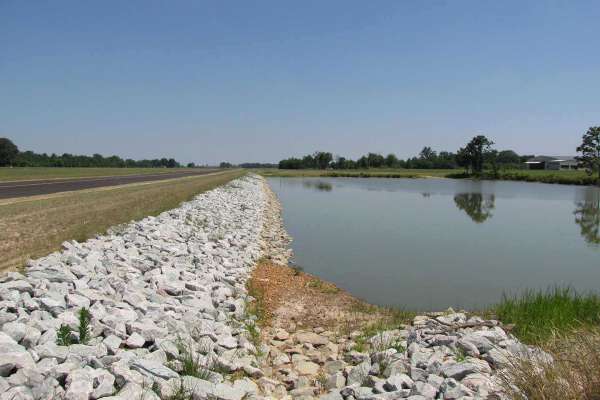
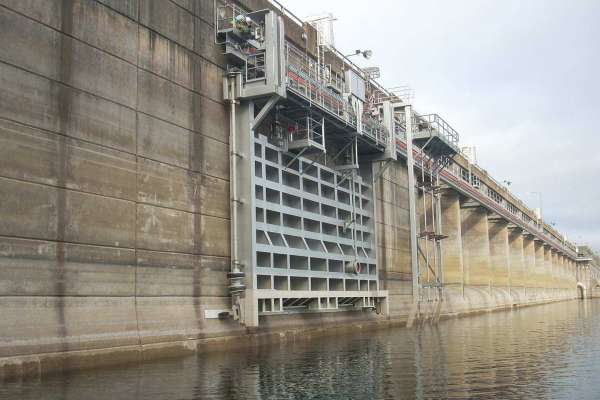

Share this article